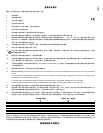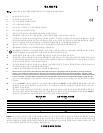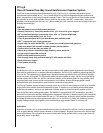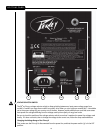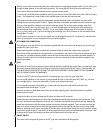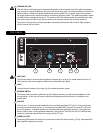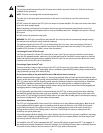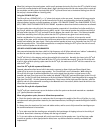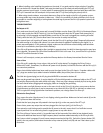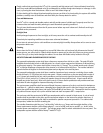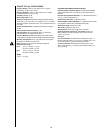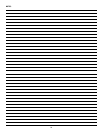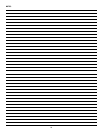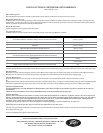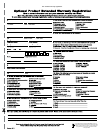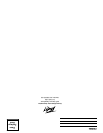
22
Finally, realize that even though the PV
®
115D is a powerful and high output unit, it does ultimately have limits,
and it may need additional powered units (or a subwoofer) to provide enough sound output or coverage. In this
case, try turning the mixer levels down a little to see if that clears things up.
If, after checking all the things listed and anything else you can think of to check safely, the system still exhibits
problems, carefully note all conditions and check with your Peavey dealer for advice.
Care and Maintenance
Your PV
®
115D is a sturdy and durable product and will provide years of reliable use if properly cared for. Use
common sense and read the safety warnings to avoid hazardous operating conditions.
The unit must be disconnected from the AC power source before any work is done on it. Refer all servicing to
qualified service personnel.
Sunlight/Heat
Avoid prolonged exposure to direct sunlight, as this may cause the unit to overheat and thermally shut off.
Excessively hot operating conditions can also cause a thermal shutdown.
Do not store in extremely hot or cold conditions or extremely high humidity. Always allow unit to come to room
temperature before use.
Cleaning
Never clean the PV
®
115D while plugged in or turned ON! When the unit has been fully disconnected from AC
power sources, use a dry cloth or a plastic bristle brush to remove soil or other dirt. Never use strong solvents
on the PV
®
115D, as they could damage the cabinet. Do not allow ANY fluids to drip inside the PV
®
115D.
ARCHITECTURAL AND ENGINEERING SPECIFICATIONS
The powered loudspeaker system shall have a frequency response from 66 Hz to 17 kHz. The peak SPL with
inaudible distortion shall reach 121 dB with music as a source, when measured at a distance of 1M and driven
to full output capacity. The system shall utilize a heavy-duty 15” Peavey
®
Pro 15 model woofer, and a Peavey
®
RX
™
14 titanium diaphragm compression driver tweeter on a constant directivity horn. The nominal radiation
pattern shall be 60 degrees in the horizontal plane and 40 degrees in the vertical plane.
The powered loudspeaker system shall have a medium impedance input connector consisting of one combo
female XLR and 1/4” RTS phone jack on the rear panel. Output connections on the rear panel shall consist of
a 1/4” phone jack providing link-out, which provides a pre-level control signal for the use of linking multiple
PV
®
115D’s in a line, and one 1/4” phone jack speaker output, 8-ohm minimum load. A level control will be
located next to the input jack. Next to the level control, a Contour Switch pushbutton will provide some bass
and treble lift when engaged for improved listening at low levels.
The system power amplifiers shall have an unfiltered frequency response of 20 Hz to 20 kHz which deviates no
more than +0, -3 dB up to rated power, a damping factor greater than 400 @ 1 kHz into 8 ohms, hum and noise
better than 90 dB below rated power, and typical THD and IMD of less than 0.5%. The amplifier shall be capable
of 400W continuous output into a 4 ohm nominal load and shall incorporate DDT
™
compression.
The enclosure shall be constructed of MDF-type wood panels and be covered in black carpet. A pair of metal
handles shall be provided on the sides, and a stand mount adaptor on the bottom for speaker stand use. A
black-coated perforated metal grille shall be provided for speaker component protection. The cabinet shall
incorporate 4 rubber feet for floor standing use.
The outside dimensions shall be 32.25” tall by 18.83” wide by 14.75” deep, and the weight shall be 56 lbs.
Power requirements shall be a dual voltage range of : 100 to 120VAC, and 220 to 240VAC, 50 - 60 Hz, with a
nominal power consumption of 370 watts. The voltage ranges shall be switch selectable on the rear panel. The
loudspeaker system shall be called a Peavey
®
model PV
®
115D.



